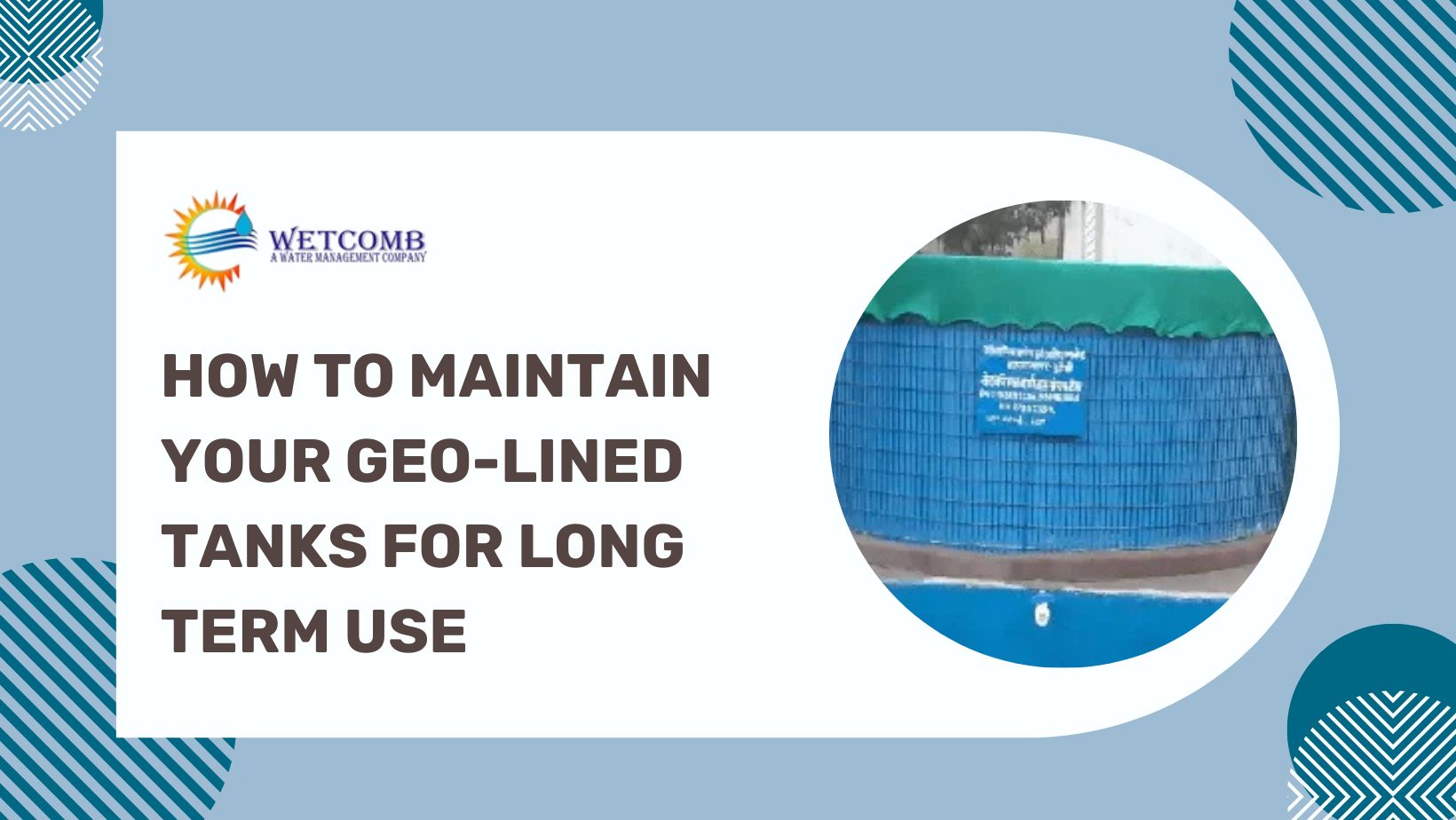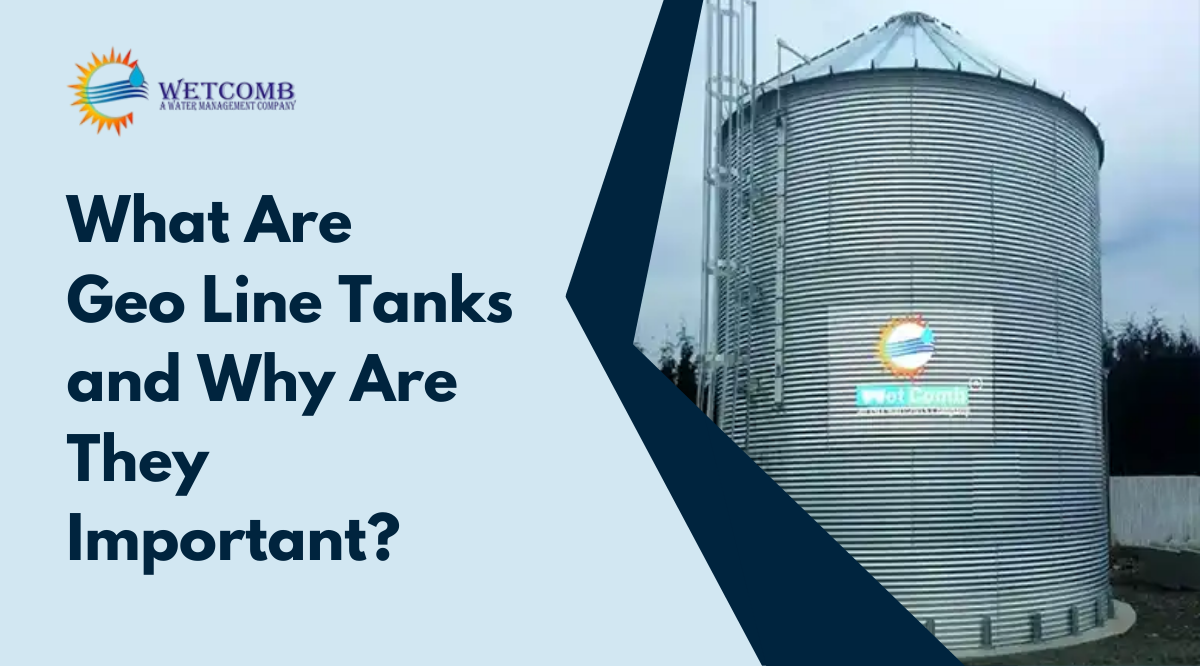
How to Maintain Your Geo-Lined Tanks for Long-Term Use
The storage of water is an important issue for industries, agricultural operations, and communities all around the world. As issues surrounding water scarcity are becoming a serious challenge, we have to emphasize the urgency to establish dependable storage methods. Geo-lined tanks have emerged as one of the most cost-effective and sustainable ways for economically storing water and other liquid materials including chemicals. Like all infrastructure investment, the maintenance of the tank must also be considered in order to provide usage throughout a lifetime.
Although you may have a specific use for the tanks, simply knowing how to properly maintain them can enhance your investment and keep them functional for years to come; regardless if their application is for general industrial use, agricultural irrigation, or as a storage vessel for community water usage.
Why Proper Care Extends Your Tank’s Service Life
Before discussing ways to manage maintenance, one must consider the value of these storage systems. Geo-lined tanks demonstrate an innovative combination of old construction methods with modern materials science. Every storage tank has a purpose-built synthetic membrane, which is a barrier that prevents internal liquids from leaking and keeps external contaminants from entering.
What is particularly noteworthy about these designs is the efficiency and versatility. While traditional concrete and metal tanks have their own merits, geo-lined tanks can be deployed in multiple locations and for multiple applications, while still delivering superior performance. They can store drinking water for communities, be deployed in agricultural operations, and manage industrial fluids. The adaptability and efficient performance of the design can accommodate ground shifting, temperature variations, and delays, making this an ideal application for professionals with long-term water storage needs in various sectors.
Regular Inspection: Your First Line of Defense
Consistent monitoring is the basis of good tank maintenance. Develop a regular inspection program that suits your storage requirements. For tanks that are running non-stop, inspections once a month are a must. While checking your plant, follow the whole length of each tank and check for rips, changes in the structure, or something that is not normal. Concentrate especially on the areas where the liner is in contact with the tank edges as these connecting points are usually the first places where the wear and tear become visible.
First of all, check the plants to find out if there is a water leak because water pooling and plants may be an indicator of a leak. Besides that, search for any punctures, tears, or parts of the liner that look as if they have been stretched or are under more pressure than usual. Small problems can grow into bigger ones if you don’t take care of them, so collect all the pieces of information and if you have any doubts, quickly confront them.
Keeping It Clean
Cleanliness is not always about visual appearance, it also serves an additional purpose of functionality and longevity. A dirty storage tank can cause performance issues leading to lesser lifespan. Specially for rain water harvesting tanks, this holds great importance as collected rainwater usually carries leaves, dirt, organic issues, and debris with it.
So how do you determine a good schedule for cleaning? Different tanks will need different cleaning schedules based upon usage and contents. Cleaning frequency varies; for example, potable water storage tanks require more frequent cleaning than irrigation storage tanks. While cleaning, be sure to use the correct tools that won’t harm the tank liner, especially soft brushes and approved cleaning materials. Avoid using metal or sharp objects, cleaning products, and cleaning materials that may damage the geomembrane.
If algae is mounting on the liner surface, address the problem in a timely manner. Minor algal growth is normal in any water storage application, but excess growth may indicate many more significant issues, including water quality. Always approach treatments based on the liner material and intended water use.
Managing Water Levels Wisely
Water changes that are sudden can be a cause of stress for the liner as well as the supporting structure. If you need to fill up an empty or almost empty tank, make it a gradual process so the liner can get used to the water pressure that is increasing. Just like that, do not allow fast water withdrawals unless it is a very urgent situation.
Also, water level regulation goes hand in hand with UV protection of the liner. Most geomembranes can become weaker if they are exposed to sunlight for a long time. By changing water levels regularly, you are letting nature be the shield that protects the liner from the sun under the waterline.
Vegetation Control Around the Perimeter
The area surrounding your tank deserves attention too. Excessive vegetation can lead to various issues. Root systems from nearby trees or shrubs, in particular, may adversely affect the tank structure or lining throughout the life of the tank.
In addition, low-hanging branches can also deposit leaves and debris into the tank, adding to maintenance, adversely impacting water quality. Keep an area clear around your tank, cut back any vegetation with aggressive root systems, cut grass when necessary and continually pull weeds. This will help protect your infrastructure and allow you to inspect the tank more easily and thoroughly. For Geo Lined Tanks in India, where the wet season creates rapid vegetation growth, keeping up with this step is particularly important.
Protecting Against Physical Damage
Preventative action can definitely save you on costly repairs and maintenance in the future. To mitigate future impacts, analyze your surroundings and your storage system. If the storage area is in the frequent movement zone of machinery or vehicles, then installing protective barriers or perimeter fencing is essential. What may appear to be minor bumps or collisions can greatly affect the membrane integrity and structural stability.
Check for potential environmental hazards around the place where you are going to install your system. Trees that are overhead or buildings that are next to the installation site can deliver falling branches and other debris that may be blown by the wind and can damage your system. Even though you can’t anticipate every scenario, knowing the vulnerability of your tank enables you to put in smart defenses. It is also beneficial in two ways to install the overhead covering, it protects the tank from both accidental impacts and harmful ultraviolet rays that can gradually weaken the liner materials.
Monitoring for Signs of Deterioration
Tank materials will deteriorate as tanks get older. The main thing is to find the deterioration stage before it becomes a very serious problem. Liner discoloration can be one of the things that help you to notice the ageing of the materials which can also be brittle or changes in the flexibility of the liner.
Companies that are working with a Geo Tank Manufacturer should have records of their tanks’ specifications and installation date in order to be able to track the lifetime of their tanks and make a maintenance or replacement plan. Most of the quality liners are made for 20-30 years with good care, but environmental factors and the way of use can shorten or prolong this period.
Seasonal Maintenance Considerations
Each season has its own challenges with respect to maintenance. The most important thing to do in an area where temperature drops below zero is to protect the tank from ice damage. When water freezes, it expands and the liners and the structures become stressed. Manage water levels in a way that will allow ice to expand. You can also think about the tanks that are not going to be used and you can drain them during the winter months.
During hot seasons and especially in the case of dry weather, water levels should be checked more often as the evaporation will accelerate. It is also the time when the UV damage can be at its maximum so a shade structure is very important. Monsoon or rainy seasons are the time when one should be inspecting the drainage systems around the tanks in order to prevent water from accumulating that could cause the tank to be unstable.
Professional Assessments
Self-inspections should be done regularly, but a professional assessment should not be overlooked. Once in a while, a qualified technician should be invited to perform a detailed evaluation of your tank system. They have the expertise and the tools that can find problems that even a human eye cannot see.
Professional assessments become even more necessary in case of hdpe tank systems where failure may result in serious consequences. Such experts are in a position to carry out different specialized tests like leak detection and liner integrity, thus reassuring the users and giving early warnings of potential issues.
Documentation and Record Keeping
Keep comprehensive records of every instance of inspection, maintenance work, repairs, and evaluations. Such documentation is like an important tool; it tracks the patterns over time, it is a source of valuable information for solving problems, and it can be indispensable in case of warranty or insurance claims.
Keep an easy-to-understand daily record that would capture the dates, observations, work done, and would also include any measurements or photographs. The use of modern digital tools and apps has made this task very simple and secure, and the stored data is readily accessible whenever there is a need.
Conclusion
The correct upkeep of geo-lined tanks is certainly not a complicated matter, however, it requires a firm decision and regularity. By doing what is recommended like having regular inspections, doing proper cleaning, managing the water level carefully, controlling vegetation, and getting professional assessments, you need not worry about your storage system letting you down in the next 30 years.
The money that you put into the maintenance of your system today will be of great benefit to you as it will extend the lifespan, lower the cost of repairs, and keep the system running smoothly. The maintenance of the infrastructure that you are responsible for will be at a good level if you observe these practices whether you have only one tank or a storage network.
Our expert team at Wetcomb is aware that apart from knowledge, maintaining essential infrastructure also requires a dedication to best practices. By setting up a thorough maintenance program for your water storage systems, you are not only safeguarding your investment but also the communities or operations that rely on you for uninterrupted water supply.


